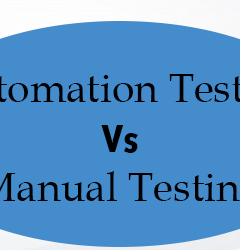06 Nov

Selenium in Automation Testing:
Selenium is a powerful open-source tool widely used in automation testing. It empowers testers to automate web applications, perform Regression Testing, and ensure software quality. Selenium offers cross-browser compatibility, flexibility, and an extensive ecosystem of tools and frameworks. However, it also comes with challenges such as setup complexity and limited support for testing non-web applications. Understanding Selenium’s pros and cons is crucial for making informed decisions in automation testing.
Pros of Selenium:-
- Open Sources Tool
- Multiple Programing Language
- It has supported Continues Integration
- It has Supported Parallel Testing
- It has a Supported Cross Browser Platform.
- It has Community Support.
Open Source Tool – Selenium has Free and Open Source tools mostly Used for Web-based Applications There is no need to allot a budget.
Multiple Programming Language – It has supported multiple programming Languages like Java, Python C#, PHP, Ruby, Perl, and JavaScript.
Continues Integration – achieve nightly Execution using Jenkins.
Supported Parallel Testing – Selenium Grid supports parallel execution of Selenium script.
Support Cross Browser Platform.- It works on almost all popular browsers such as Chrome, Firefox, Internet Explorer, Safari, etc.
Community Support.- Selenium is backed by the vast community which is an active
Cons of Selenium:–
Selenium Supports Web applications for web test Automation. Learning curve the best way to use selenium Web driver.
- High Beginning Cost
- Required 3rd Party Tool Binding
- Difficulty in managing local Infrastructure.
- Slow test development due to the script Base Approach.
- No participation from Non-Technical Resource
- Low readability of test script.
- Solve Automation Challenge
- No Test Reporting capabilities
- Lack of professional on- Demand Support for Enterprise Projects
- Lack of Synchronization
- Expensive test Maintenance
- Key Elements of Effective Test Automation Strategy
High Beginning Cost – It is right that selenium is free and does not require licensing, We need to think of a couple of other factors 1st setup and configuration of a Test Framework from scratch takes a lot of time and Wasted time translates to high Initial costs if the requirement is urgent.
Required 3rd Party Tool Binding- Selenium as a framework is not completed Comprehensive solution to fully automating the testing of web Applications. It requires 3rd party libraries and language.
Wrapping these libraries to make it a complete solution for end-to-end testing requirements.
Difficulty of managing local Infrastructure – parallel Testing is much possible with the selenium Grid however is it economically feasible to set up and manage additional infrastructure?
Slow test development due to script-based approach – Creating stable and maintainable tests in Selenium is not easy it requires expert knowledge of popular programming languages.
No participation from Non-Technical Resources – In continuous delivery and DevOps, quality is everyone’s Responsibility: selenium-based Automation But all code-based Testing Solutions.
Low readability of test script – Test Script is Not Readable for non-programmers and non-technical workforce which hinders their participation in the test automation process.
No Test Reporting capabilities – popular test automation libraries used with Selenium such as TestNG and JUnit can generate Reports but limited information, Test Representations
That is easier to understand. Also sharing the Results with the stakeholders is difficult and we need to introduce a lot of third-party components for that
Lack of professionalism – Demand Support for Enterprise Projects – Even though the Selenium community is pretty helpful, you can’t always rely on community support for large-scale Enterprise projects that demand privacy and quick resolution time.
Synchronization – Due to heavy usage of AJAX and async programming in modern web development technologies, Tests are not always very stable. Test Script makes Test Maintenance a bit difficult.
Key Elements of Effective Test Automation Strategy – Need the Right tool for automated software testing, as well as Strong Test Automation Framework support for proper Reporting. well–trained test automation team.
Solving Automation Challenges – There are no inbuilt solutions for Specific tasks such as file handling, API level tasks, Os-based popup, and Basic Authentication.
Expensive Test Maintenance – The difficulty is locators that we should use in our test automation script. once a locator is modified, we always need to update our test code. Solutions with AI tools can better handle this type of situation community.
Conclusion:
Selenium stands as a versatile and valuable asset in the realm of automation testing. Its strengths, including cross-browser support, flexibility, and a robust community, empower testers to streamline their testing processes. Nevertheless, it is essential to acknowledge the potential complexities in configuring Selenium and its limitations in testing non-web applications. By weighing these advantages and drawbacks, one can harness Selenium’s capabilities effectively and make informed choices to drive efficient and high-quality automation testing initiatives.
Akash Kadam works as a Automation Tester at QACraft. He is a Mechanical Engineer with a degree and has 2+ years of experience in software testing etc. In his free time, he loves to do reading and explore technical skills.
Related Post
Recent Posts
Categories
- Agile Testing
- Android App Testing
- Automation Testing
- Banking Domain Testing
- Beta Testing
- cloud testing
- Corporate Life
- cross browser testing
- Cypress Testing
- desktop testing
- Domain Testing
- E-commerce Website Testing
- E-learning App Testing
- Functional Testing
- Game Testing
- Healthcare Domain Testing
- Infographics
- Ios App Testing
- Jenkins
- JIRA
- Katalon
- Manual Testing
- Mobile App Testing
- monkey testing
- Performance Testing
- Salesforce Testing
- security testing
- Selenium
- Software Testing
- static testing
- Test Environments
- vdfv
- Web Application Testing
© Copyright 2024 QACraft Pvt. Ltd. All rights reserved.
Contact : +91 9157786796




Akash Kadam